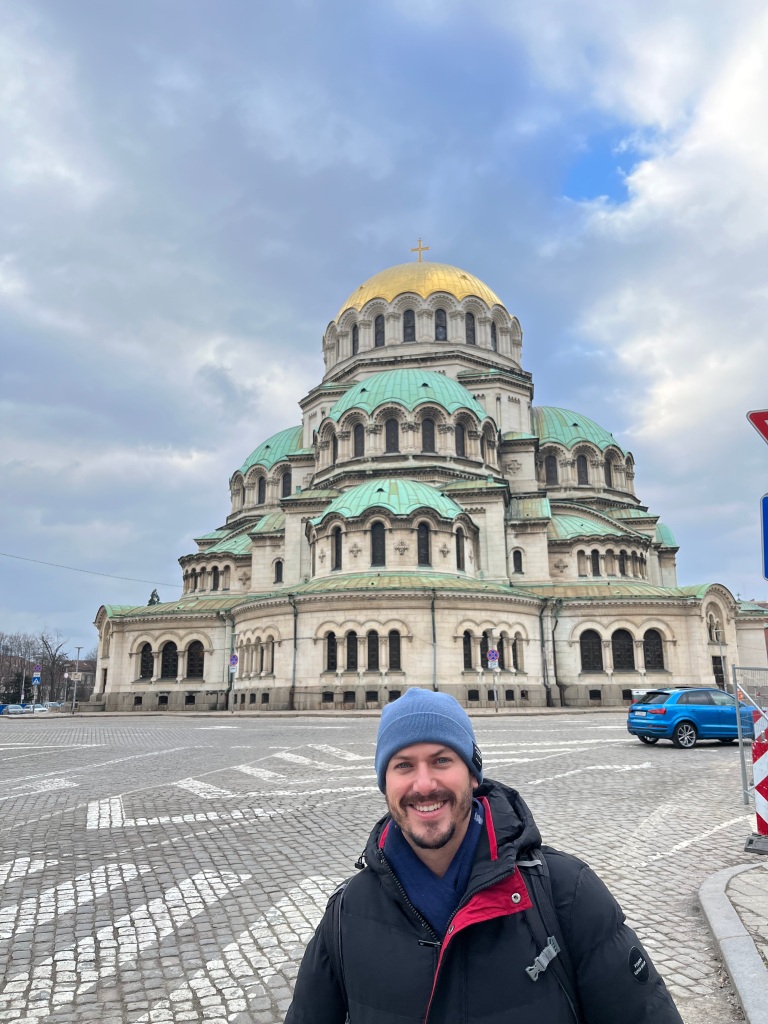
Bulgaria is an exceptional tourist destination in Eastern Europe, and on my travels during the first two weeks in February 2023, we enjoyed exceptionally warm weather with clear skies. This is the second year in a row that I have visited Eastern Europe during the French school winter break, and I couldn’t recommend it more! In Eastern Europe, you will find great deals on everything from accommodation, rental cars, and food, to entertainment and guided tours.
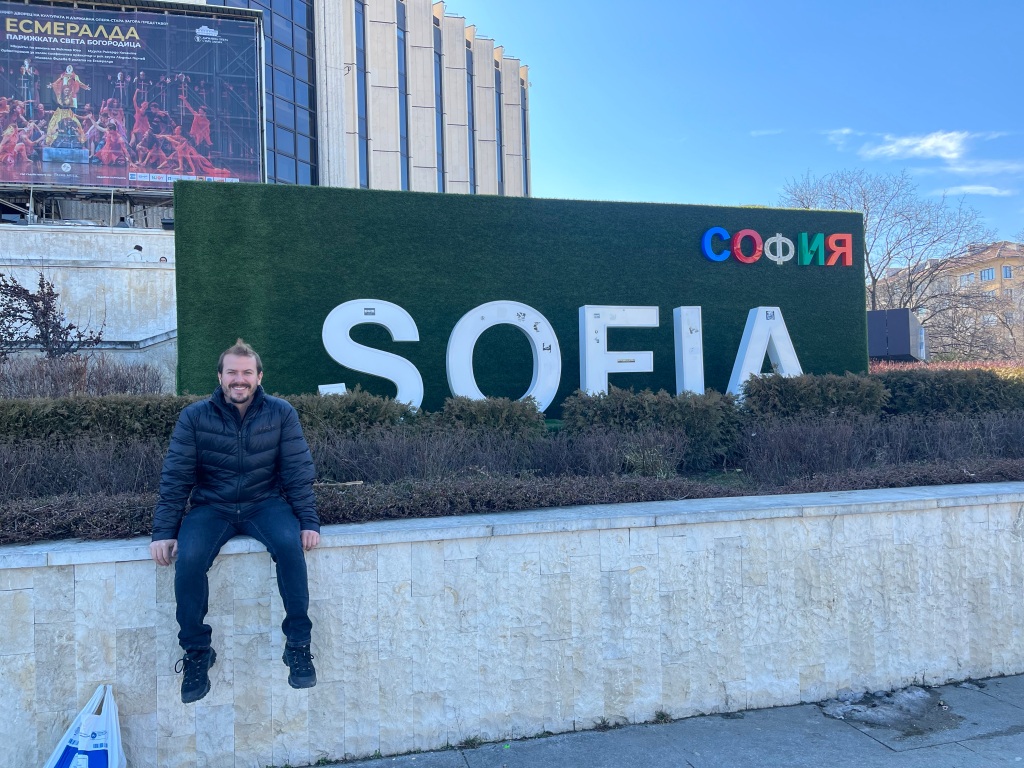
One of the best reasons to travel is to learn about the history and get local people’s opinions about their culture and history. You are sure to find a unique perspective, and this is one of the reasons why I love to travel! During this trip, I explored the history of Bulgaria and learned some exciting things from the locals during my journey. Let’s dive into it!
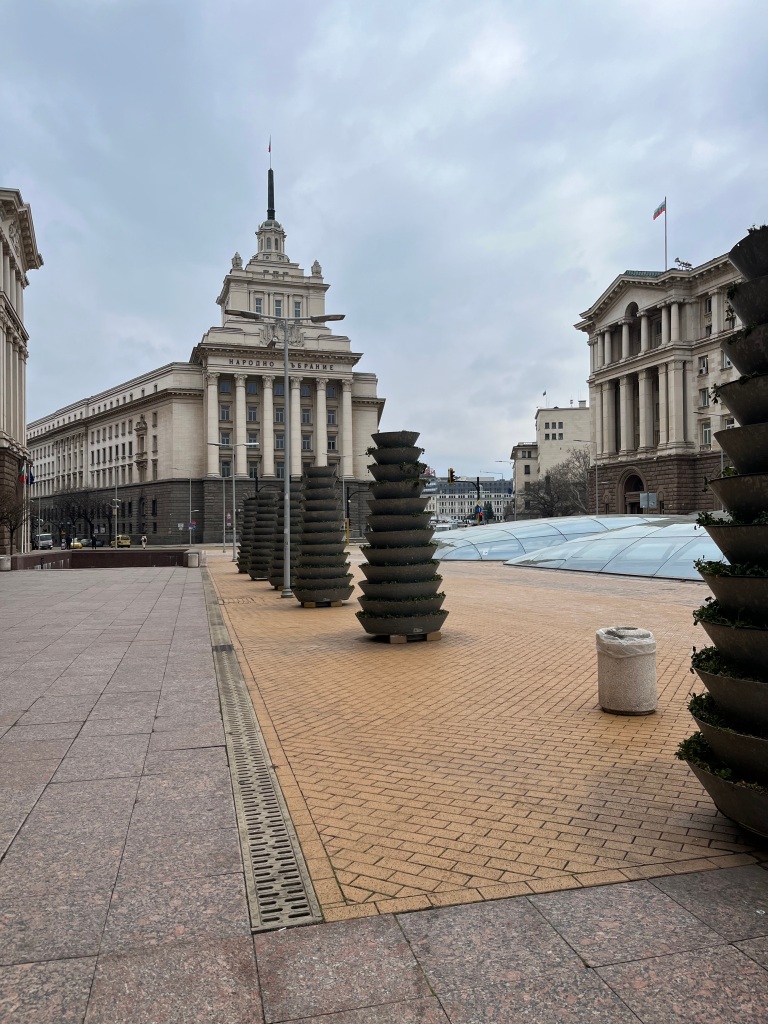
Sofia, the capital city of Bulgaria, has a rich history that dates back to ancient times. Walk around the downtown area and visit notable historical landmarks such as the Alexander Nevsky Cathedral, the National Museum of History, the Boyana Church, and the Roman ruins of Serdica.
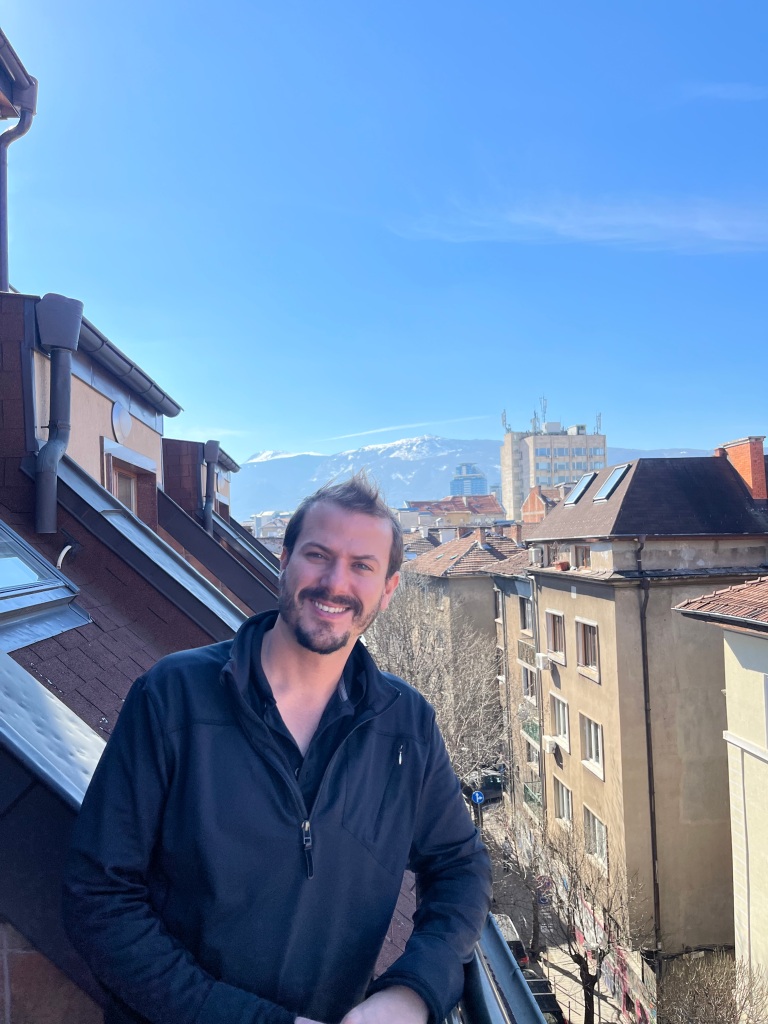
Sofia has a vibrant nightlife scene, with plenty of bars, clubs, and restaurants serving huge meals to share among groups of friends, family style. Check out some of the city’s most popular nightspots, like the Raketa Rakia Bar, One More Bar, and Hambara Bar. Below is a picture from one of my favorite restaurants in Sofia The Hadjidragana Tavern (https://goo.gl/maps/UT1iZmxP3XFGfkms5).

I am a big fan of Bulgarian cuisine: Bulgarian cuisine is a unique blend of Mediterranean and Balkan influences, with many fresh vegetables, grilled meats, and delicious cheeses—some of the most popular dishes, including banitsa, kavarma, and kebapche; are very much worth a taste. These are some of my other favorite food spots in Sofia:
Ресторант Щастливеца Витошка (https://goo.gl/maps/RYnYVD4oBuzWvTBXA)
Coffee Bar (https://goo.gl/maps/sNh5cRfLb2Z7xXGS7)

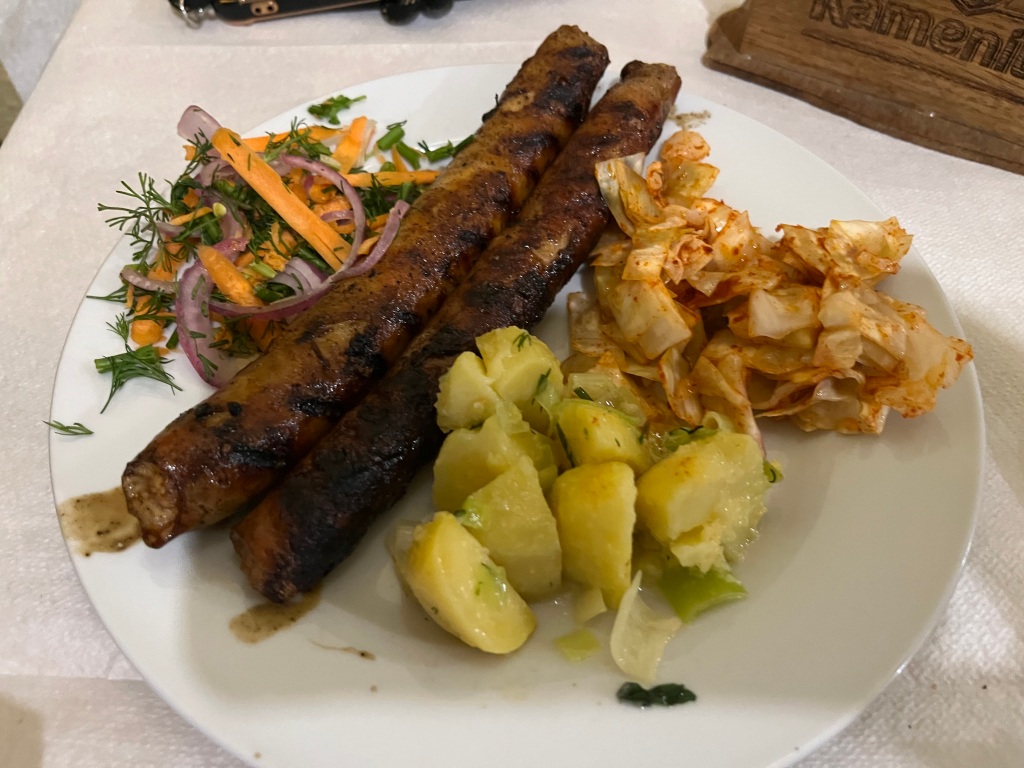


Learn about Bulgarian culture: Bulgaria has a rich cultural heritage, with traditional music, dance, and crafts that have been passed down for centuries. Attend a Bulgarian folk music and dance performance, visit a local craft market, or try making your own traditional pottery.
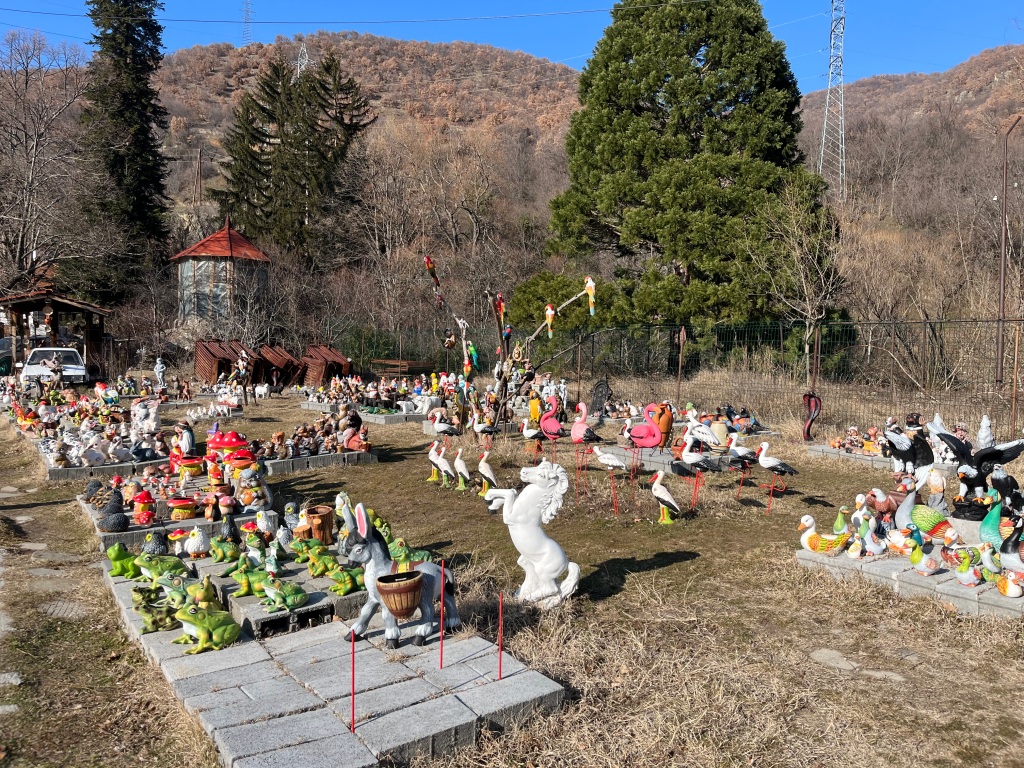


Bulgaria is known for having many natural springs with fresh and clean drinking water available to the public for free. These springs are known as “cheshma” in Bulgarian.
One of the most famous springs in Bulgaria is the “Devin” spring, located in the Rhodope Mountains near Devin. The water from this spring is said to have healing properties and is believed to be suitable for digestion and skin problems.
Another famous spring is the “Borovitsa” in the Rila Mountains. The water from this spring is rich in minerals and is believed to affect the immune system positively.
The “Kamchiya” spring is also well-known, located near the Black Sea coast. The water from this spring is high in calcium and is said to be beneficial for people with bone and joint problems.
There are many other natural springs throughout Bulgaria, each with unique properties and benefits. Many locals and tourists alike take advantage of these springs by filling bottles and containers with fresh water to take with them on their travels.
It’s important to note that while the water from these natural springs is generally considered safe and clean, it’s always a good idea to exercise caution and use common sense when drinking water from any source.
UNESCO’s World Heritage site The Rila Monastery:
The Rila Monastery is one of Bulgaria’s most famous and significant cultural and historical landmarks. It is located in the Rila Mountains, about 120 km south of Sofia, and a beautiful and modern highway takes your right to the Monastery through a few cool towns and past the unofficial junk museum.

The Rila Monastery was founded in the 10th century by the hermit St. Ivan of Rila, who lived in a mountain cave. Over the centuries, the monastery has been destroyed and rebuilt several times, with the current buildings dating back to the mid-19th century.
The monastery is famous for its unique architecture, which combines elements of Byzantine, Bulgarian, and European styles. The main church, the Nativity of the Virgin, is decorated with colorful frescoes and is considered a Bulgarian Renaissance art masterpiece.

The monastery also contains a museum with exhibits of religious art and artifacts and a library with more than 15,000 books and manuscripts.

In addition to its cultural and historical significance, the Rila Monastery is also known for its beautiful natural surroundings. It is located in a scenic valley surrounded by mountains and forests and is a popular destination for hiking and outdoor activities.

The Rila Monastery is a must-visit destination for anyone interested in Bulgaria’s history, culture, and natural beauty.
The Boyana Church is a medieval Bulgarian Orthodox church located on the outskirts of Sofia, the capital city of Bulgaria. It is one of Bulgaria’s most famous cultural and historical landmarks and is a UNESCO World Heritage Site.
The Boyana Church was built in three stages, with the oldest section dating back to the late 10th or early 11th century. The church was expanded and renovated several times over the centuries, with the most recent additions dating back to the 19th century.
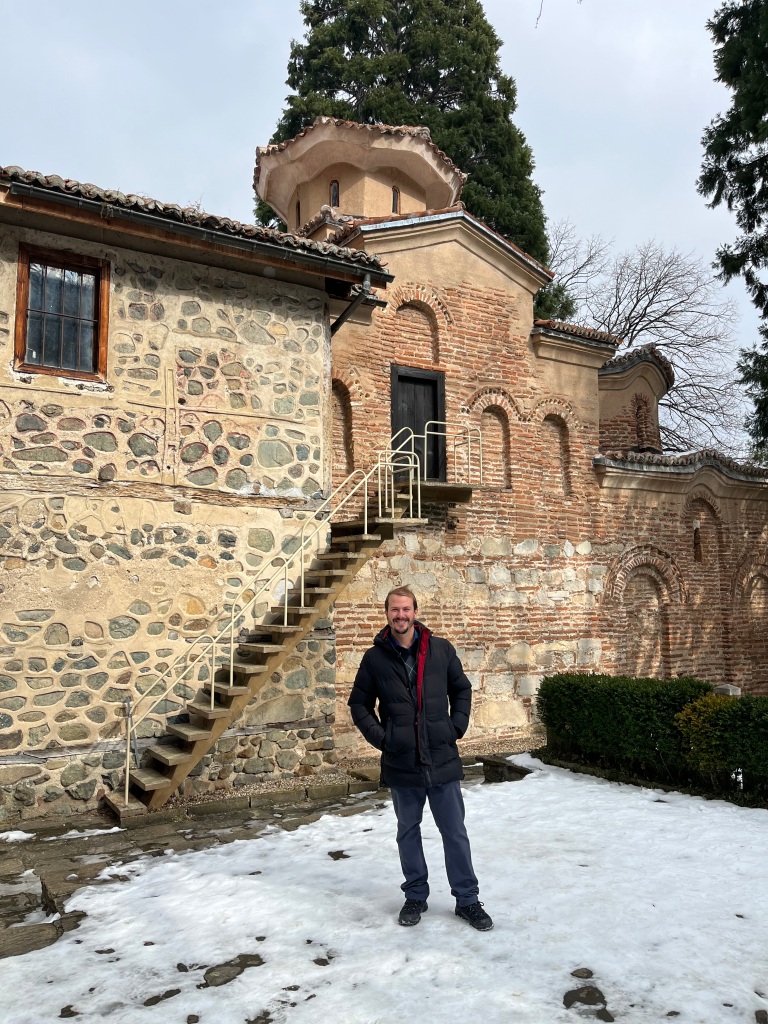
The church is famous for its stunning frescoes, considered some of the best examples of medieval Bulgarian art. The frescoes were painted in three stages, with the oldest dating back to the 11th century and the most recent dating back to the 14th century. The frescoes depict scenes from the life of Jesus and the Virgin Mary and portraits of saints and other religious figures.
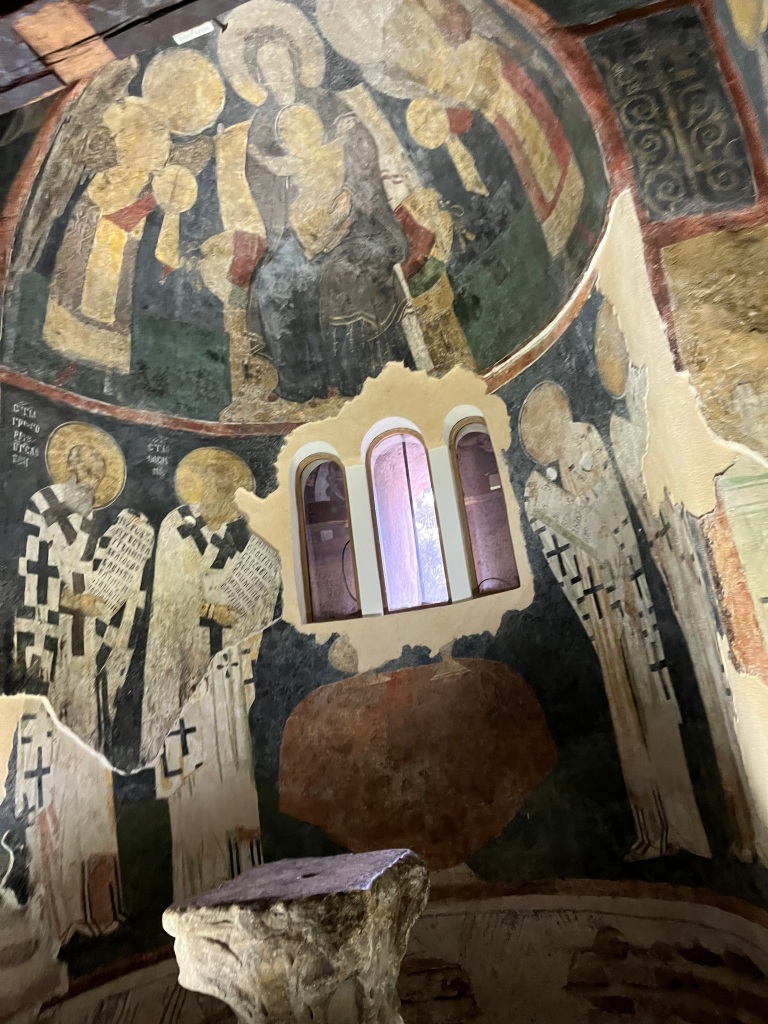
In addition to the frescoes, the Boyana Church is also famous for its unique architecture. The church is built in the shape of a cross and has three sections, each with its distinct style. The oldest section, known as the Eastern Church, is created in the Byzantine style, while the middle area, known as the Transitional Church, combines Byzantine and Bulgarian architectural styles. The Western Church’s newest section is built in the Bulgarian Renaissance style.
The Boyana Church is a must-visit destination for anyone interested in Bulgaria’s history, culture, and art, and it is along the drive towards Rila.
After you have seen the main attractions of Sofia. I recommend talking a trip to the second largest city in Bulgaria, Plovdiv!

Plovdiv is known for its charming old town, which is filled with colorful houses, narrow streets, and ancient Roman ruins. Plovdiv is one of the oldest cities in Europe, with a history that dates back over 8,000 years. The city is located in central Bulgaria and has been an important cultural and commercial center throughout history.
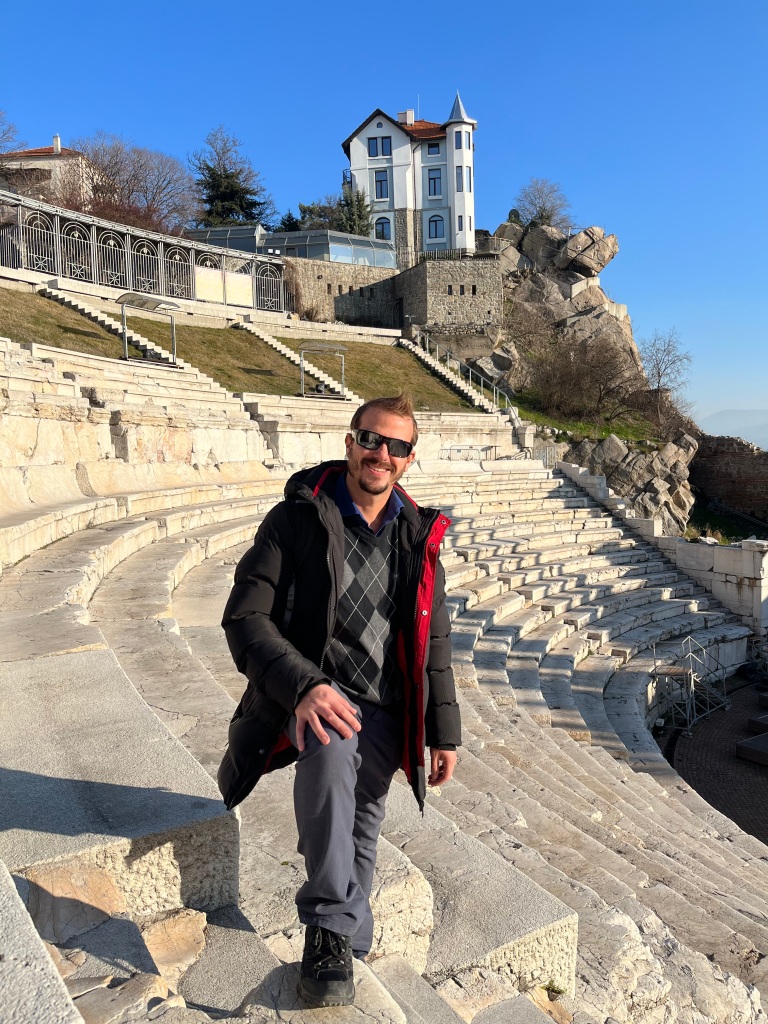
The earliest evidence of human settlement in Plovdiv dates back to the 6th millennium BCE when a Neolithic settlement was established on the site. Over the centuries, Plovdiv was ruled by various empires and kingdoms, including the Thracians, Romans, Byzantines, Bulgarians, and Ottoman Turks.

Under the Romans, Plovdiv (then known as Philippopolis) became a significant regional capital and was known for its well-preserved ancient theatre and other architectural landmarks. In the Middle Ages, Plovdiv was a center of Bulgarian culture and learning and played a significant role in the country’s political and religious history.

During the Ottoman period, Plovdiv became a significant center of trade and commerce, with a vibrant bazaar district and a thriving cultural scene. The city’s architecture and urban planning were heavily influenced by Ottoman styles and traditions, with many mosques, bathhouses, and other Ottoman-era landmarks still standing today.

Following Bulgaria’s liberation from Ottoman rule in 1878, Plovdiv played a vital role in the country’s political and cultural life. It was chosen as the capital of the autonomous province of Eastern Rumelia. In the 20th century, Plovdiv continued to grow and develop. Today, it is a major cultural and economic center in Bulgaria, with a rich history and a vibrant contemporary art and music scene.

Plovdiv is home to several well-preserved Roman ruins that glimpse into the city’s ancient history. Some of the most notable Roman landmarks in Plovdiv include:
- The Ancient Theater – This is one of Plovdiv’s most impressive Roman ruins and is believed to have been built in the 2nd century AD. The theater has a seating capacity of up to 6,000 people and was used for gladiator fights and theatrical performances.
- The Roman Stadium is another impressive Roman ruin in Plovdiv, located near the Ancient Theater. The stadium was built in the 2nd century AD and could accommodate up to 30,000 spectators. It was used for athletic contests, including running and wrestling.
- The Eirene Residence – This well-preserved Roman villa dates back to the 2nd century AD. The villa is named after a statue of the goddess Eirene discovered on the site and features several impressive mosaics and frescoes.
- The Roman Forum – This was the center of public life in ancient Plovdiv and was the site of political, social, and economic activities. The forum is located in the city’s heart and was excavated in the 1980s.
The Roman ruins in Plovdiv are a testament to the city’s rich history and cultural heritage and offer visitors a unique opportunity to explore the living relics of the ancient world.
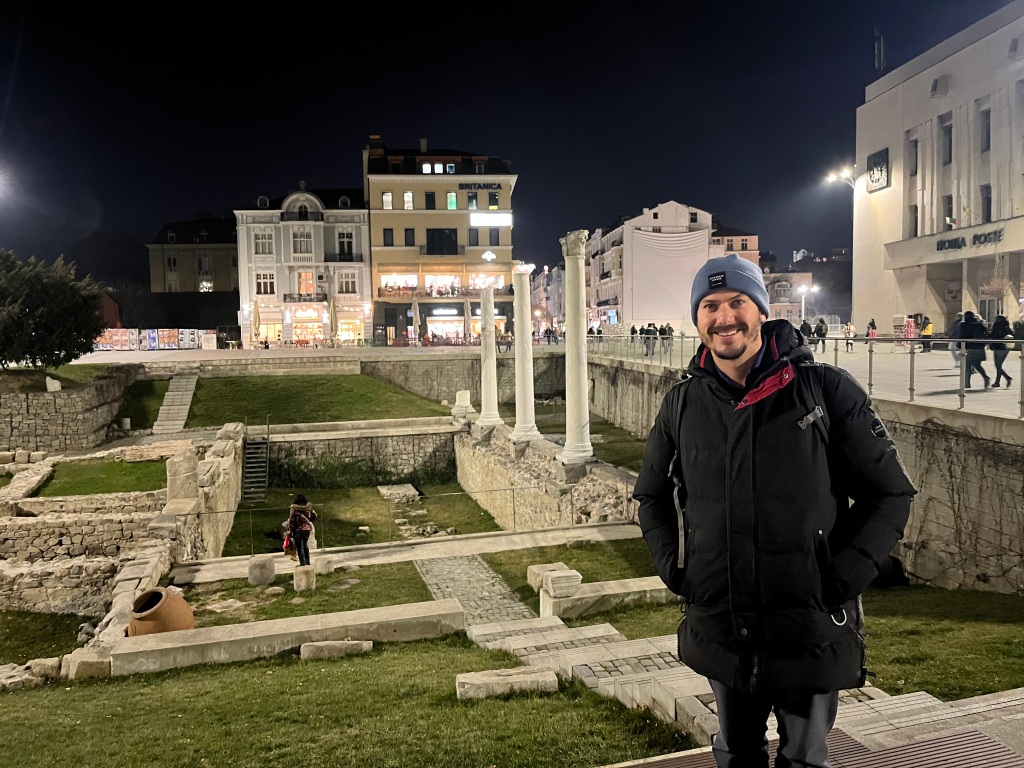
The Roman ruins in the basement of the H&M store in Plovdiv are a fascinating archaeological discovery made during the construction of the shopping complex in 2012. The ruins were discovered by chance during excavation and were found to date back to the 2nd and 3rd centuries AD.

The ruins are believed to have been part of a public building complex, possibly a forum or a public bathhouse. The complex covers an area of around 700 square meters and includes several well-preserved Roman structures, including a large hall with a mosaic floor, a water fountain, and a heating system.
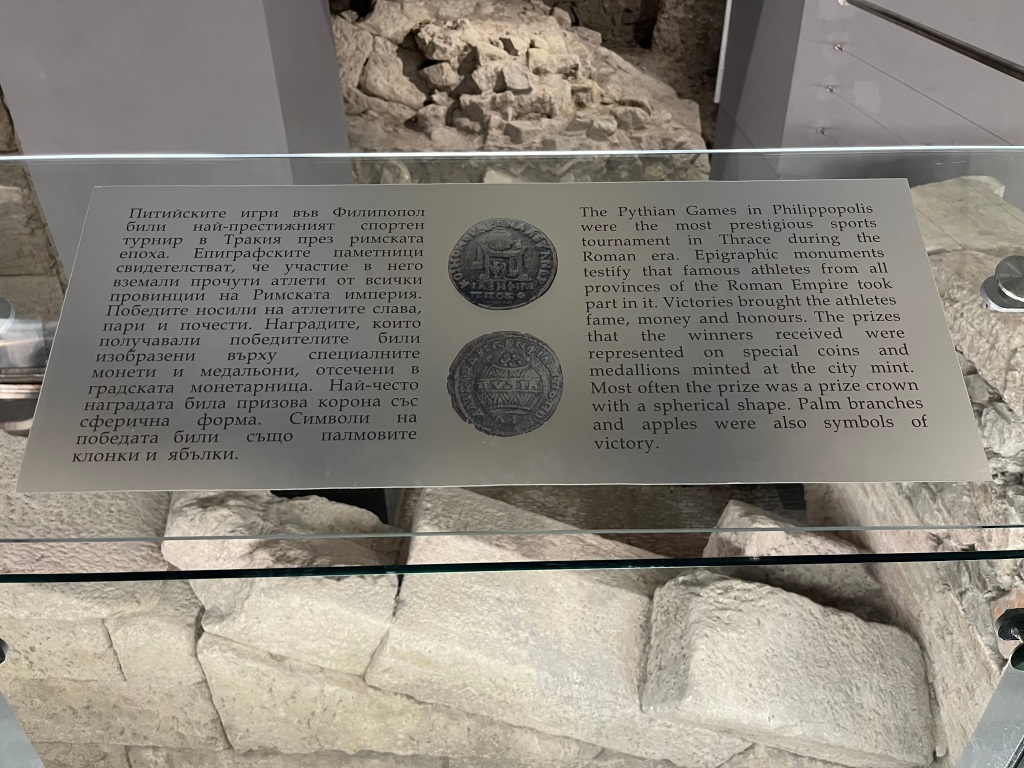
The hall is the most impressive feature of the complex and is decorated with colorful mosaic floors depicting scenes from daily life, mythological figures, and geometric patterns. The hall was likely used for public gatherings, ceremonies, or banquets.
The ruins have been carefully preserved and are now open to the public as part of a museum exhibition in the basement of the H&M store. Visitors can explore the ruins and learn about the city’s ancient Roman past, including its architectural styles, cultural practices, and religious beliefs.

The discovery of the Roman ruins in the basement of the H&M store has been a significant attraction for tourists and locals alike. It has helped to promote Plovdiv as a city with a rich history and cultural heritage.
Bulgaria’s dark communist history:
Bulgaria has a long history of political and cultural ties with Russia, dating back to the 19th century when Bulgaria was part of the Ottoman Empire. In 1878, following the Russo-Turkish War, Bulgaria gained its independence with the help of Russia.

During the 20th century, Bulgaria became a communist state and was closely aligned with the Soviet Union, which significantly influenced Bulgarian politics, culture, and economy. The Bulgarian Communist Party came to power in 1944, and Bulgaria became a one-party state with a planned economy and a centrally controlled political system.
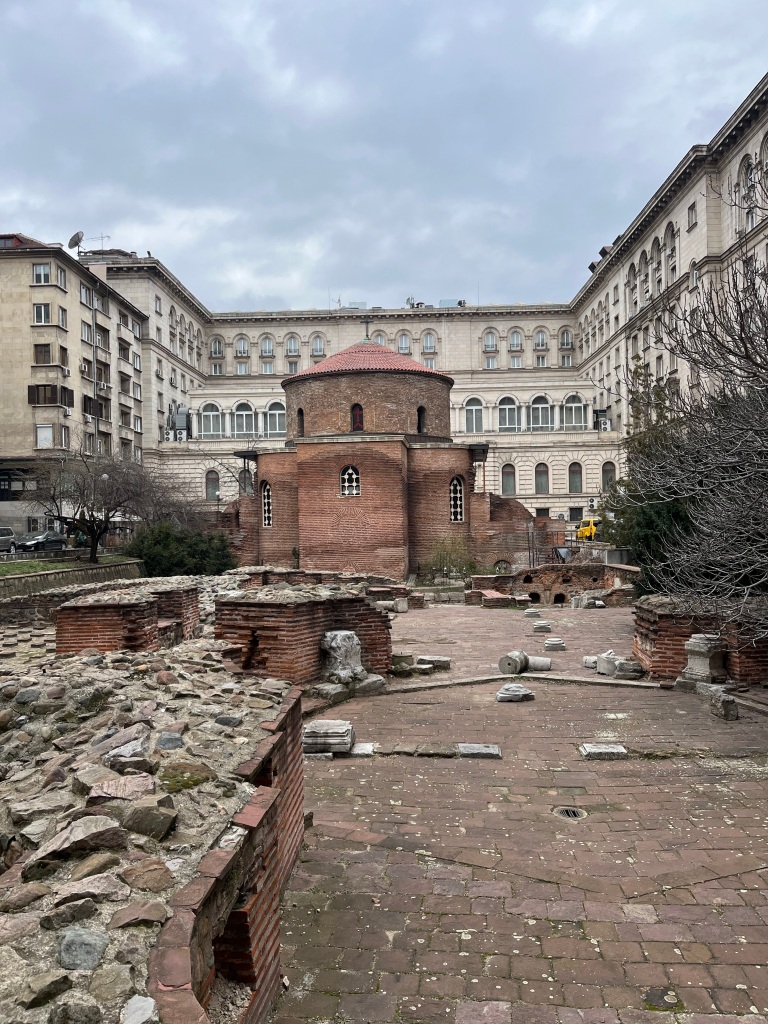
Under communism, Bulgaria experienced significant social and economic changes, including the nationalization of industries, the collectivization of agriculture, and the establishment of a welfare system. However, the regime was also characterized by political repression, censorship, and human rights abuses, including the suppression of dissent and the persecution of political opponents.
In 1989, following a wave of widespread protests and growing international pressure, Bulgaria underwent a peaceful transition to democracy and a market economy. Since then, the country has made significant progress in political and economic reforms and has joined the European Union and NATO.
Today, Bulgaria maintains close political and economic ties with Russia while also seeking to strengthen its relationships with other European countries and the United States. The legacy of communism remains a contentious issue in Bulgarian politics and society, with ongoing debates about the nature and impact of the country’s communist past.
Bulgaria’s path to the EU:

Bulgaria joined the European Union (EU) on January 1, 2007, together with Romania. The country’s path to EU membership was a long and complex process, marked by significant political and economic reforms, as well as cultural barriers.
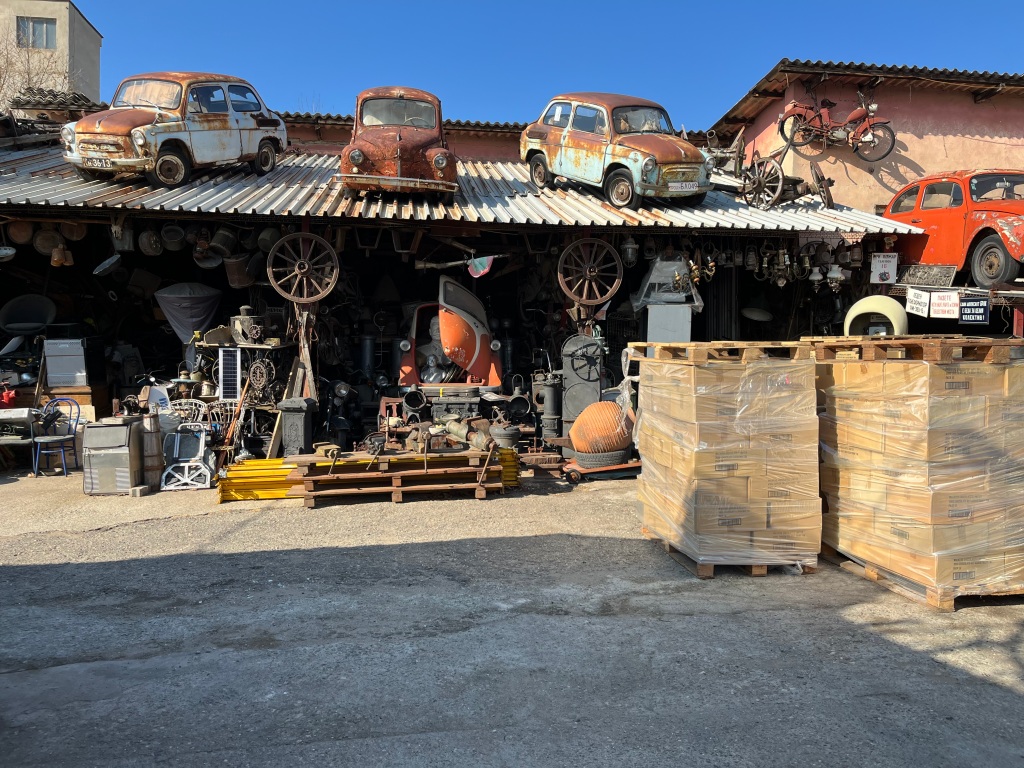
Bulgaria began its journey towards EU membership in 1993 when it signed an association agreement with the European Community, the predecessor of the EU. The agreement set the stage for closer political and economic ties between Bulgaria and the EU and served as a framework for the country’s accession negotiations.
The accession negotiations began in 2000, covering a wide range of issues, including political, economic, and legal reforms. Bulgaria had to demonstrate that it had made significant progress in human rights, the rule of law, corruption, and economic development.
Bulgaria’s accession negotiations were marked by several challenges and setbacks, including concerns over corruption and organized crime, which were seen as major obstacles to the country’s EU membership. However, with the help of EU funding and technical assistance, Bulgaria made significant progress in these areas and ultimately met the EU’s accession criteria.
On January 1, 2007, Bulgaria officially became a member of the EU, together with Romania. EU membership has brought significant benefits to Bulgaria, including increased trade and investment, access to EU funding and programs, and participation in EU decision-making and policy-making processes.
However, Bulgaria’s EU membership has also presented challenges, particularly in areas such as corruption, economic development, and the rule of law. The country has been working to address these challenges with the help of EU support and technical assistance. Overall, Bulgaria’s membership in the EU has been an essential milestone in the country’s history and has played a significant role in shaping its political, economic, and social development in the 21st century.
One of the following steps for Bulgaria’s further integration into the EU is to adopt the Euro. Currently, the Bulgarian lev (BGN) is the official currency of Bulgaria and has a long history, which is one of the reasons why locals want to keep it. The lev was first introduced in 1881 after Bulgaria gained independence from the Ottoman Empire. The currency was named after the medieval Bulgarian money of the same name.
Initially, the lev was pegged to the French franc at a rate of 1 lev = 5 francs, and this peg remained in place until World War I. During this time, the lev was backed by gold, which helped to maintain its value and stability.
After World War I, the lev underwent several periods of devaluation and inflation as Bulgaria struggled to rebuild its economy after the war. During World War II, Bulgaria joined the Axis powers, and the Reichsmark replaced the lev.
After the war, Bulgaria became a socialist state, and the lev was replaced by the Bulgarian lev (BGL) in 1952. The BGL was pegged to the Soviet ruble at a fixed exchange rate, which remained in place until the collapse of the Soviet Union in 1991.
Following the fall of communism in Bulgaria in 1989, the country began a process of economic reform and modernization. In 1997, the Bulgarian lev (BGN) was introduced as the new currency and was pegged to the German mark at a fixed exchange rate. Today, the lev is still pegged to the Euro at a fixed exchange rate and is used widely in Bulgaria for daily transactions.
Overall, the history of the Bulgarian lev is closely intertwined with the country’s political and economic history and reflects the many challenges and changes Bulgaria has faced over the past century.
Another important step for further integration into the EU is for Bulgaria to join the Schengen Zone. Bulgaria has been working towards entering the Schengen Zone for many years, but as of 2023, it is still not a member. The Schengen Zone is a group of European countries that have agreed to abolish border controls between each other, allowing for the free movement of people and goods across the region.
Bulgaria has not yet joined the Schengen Zone due to concerns over corruption and organized crime. Some members of the European Union have expressed concerns that Bulgaria needs to do more to tackle corruption and improve its law enforcement capabilities, which could threaten the security of the Schengen Area.
Another factor that has delayed Bulgaria’s entry into the Schengen Zone is the ongoing refugee crisis in Europe. Some countries have expressed concerns about the large numbers of refugees and migrants who have entered Europe in recent years and have been hesitant to allow new members into the Schengen Zone until the crisis is resolved.
Despite these challenges, Bulgaria has made significant progress in recent years toward meeting the requirements for Schengen membership. The country has implemented many reforms to improve its border controls and law enforcement capabilities and has worked closely with other European countries to address issues related to migration and security.
While Bulgaria has yet to join the Schengen Zone, the country remains committed to becoming a full member of the European Union and working towards greater integration with its European neighbors.
Because of this, you should check if you need a visa to enter Bulgaria. For Americans and French nationals, you can show up with your passport at the airport and get a tourist stamp valid for stays up to 90 days. My entrance into Bulgaria was swift and convenient, and the immigration officer who stamped my passport asked me about American football, and we enjoyed a few laughs together. Generally speaking, I felt that every Bulgarian I spoke with was happy to see me in the country as a tourist, and everyone was very welcoming.
Colorado Ski industry and Bulgaria:
Throughout my life, I have had the pleasure of meeting Bulgarians in the USA. Many of the Bulgarian’s I met were in the ski areas of Colorado, but I also met a lot of Bulgarians during my time working in Alaska.
Many Bulgarians travel to the United States to work at ski areas and tourist hubs because of the seasonal nature of the jobs and the opportunity to earn a higher income than they might be able to in Bulgaria. Working at ski resorts in the US can be a popular option for young Bulgarians seeking to gain work experience, improve their language skills, and earn money to support themselves or their families. In addition, since skiing is popular
In recent years, Bulgarian ski instructors have gained a reputation for being highly skilled and professional, which has led to increased demand for Bulgarian workers at ski resorts in the United States. Many ski resorts in the US rely on seasonal workers worldwide to fill positions, such as ski instructors, lift operators, and hospitality staff. Bulgarians have become increasingly sought after for these roles. From my experience in bigger cities in Bulgaria, it is common to tip 10%; however, not everyone tips. A local explained that many restaurant servers work 8 hours or more for around 40 Lev, or 20$, and that many servers in touristic locations compete for serving jobs as they can earn much more than their salary in tips in upper-scale restaurants. In the USA, servers generally average about 20% in tips in more excellent restaurants, and with the higher costs of food, it is evident that the earning potential is higher; however, the Bulgarians who I have known working in the service industry in the USA are usually not serving tables unless they have immigrated to the USA. The seasonal Bulgarian workers typically work in support rules and make a fraction of what the servers are making.
Additionally, working at ski resorts in the US can offer Bulgarian workers the opportunity to experience American culture, travel, and learn new skills that can be useful in their future careers. While there are challenges associated with living and working in a foreign country, many Bulgarians who I have met working in the ski areas in the US tell me that the experience is incredible and that there is no comparison to the income potential and the vast and countless wonders of the USA which J1s have the unique experience to enjoy.
From Sofia, take a short and cheap flight over to Serbia! Info about my experience in Serbia to follow soon, thanks for reading!

